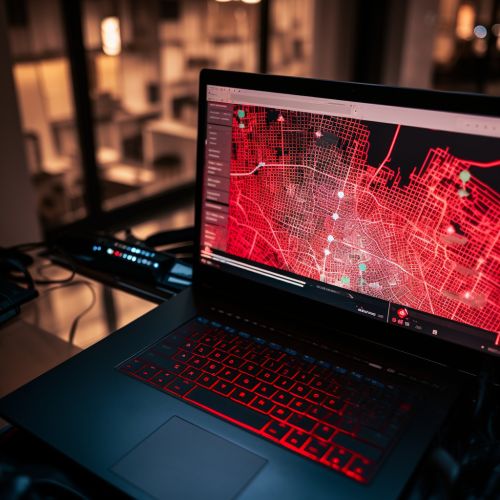The Role of Artificial Intelligence in Predictive Policing
Introduction
Artificial intelligence (AI) has been increasingly applied in various sectors, including law enforcement, where it plays a significant role in predictive policing. Predictive policing refers to the use of mathematical, predictive and analytical techniques in law enforcement to identify potential criminal activity. AI, with its ability to process large amounts of data and identify patterns, has become a crucial tool in this area.


Role of AI in Predictive Policing
AI's role in predictive policing primarily involves data analysis, pattern recognition, and prediction. It can analyze vast amounts of data, identify patterns, and make predictions about future criminal activities. This process involves several steps and the use of various AI technologies.
Data Collection and Analysis
The first step in predictive policing is data collection. Law enforcement agencies collect data from various sources, including crime reports, social media, surveillance systems, and other public and private databases. This data can include information about past crimes, such as their location, time, type, and other relevant details.
AI algorithms, specifically those based on machine learning, are then used to analyze this data. These algorithms can process vast amounts of data much faster and more accurately than humans. They can identify patterns and correlations that might not be apparent to human analysts.
Pattern Recognition
Pattern recognition is a critical aspect of AI's role in predictive policing. AI algorithms can identify patterns in the data that might indicate potential criminal activity. For example, they might identify a pattern of burglaries occurring in a specific area at a particular time.
These patterns can be complex and involve multiple variables. For example, an AI algorithm might identify a correlation between the occurrence of certain types of crimes and specific weather conditions, times of day, or other factors. Such patterns can provide valuable insights for law enforcement agencies and help them allocate their resources more effectively.
Prediction
Once patterns have been identified, AI can be used to make predictions about future criminal activities. These predictions can help law enforcement agencies anticipate potential crimes and take proactive measures to prevent them.
Predictive policing models can provide detailed predictions, such as the likely location and time of a future crime. They can also provide more general predictions, such as the likelihood of a rise in certain types of crimes in a particular area.
Benefits of AI in Predictive Policing
The use of AI in predictive policing offers several benefits. It can help law enforcement agencies make more informed decisions, allocate their resources more effectively, and potentially prevent crimes before they occur.
Improved Decision-Making
AI can provide law enforcement agencies with valuable insights that can inform their decision-making. For example, predictive policing models can help agencies identify areas that are at high risk of crime, allowing them to allocate their resources more effectively.
Efficient Resource Allocation
Predictive policing can help law enforcement agencies allocate their resources more efficiently. By predicting where and when crimes are likely to occur, agencies can deploy their officers more strategically, potentially preventing crimes before they occur.
Crime Prevention
Perhaps the most significant benefit of predictive policing is its potential for crime prevention. By predicting potential crimes, law enforcement agencies can take proactive measures to prevent them. This could involve increasing patrols in high-risk areas, implementing crime prevention programs, or taking other proactive measures.
Criticisms and Concerns
Despite its potential benefits, the use of AI in predictive policing has also raised several criticisms and concerns. These primarily relate to issues of privacy, bias, and the potential for misuse.
Privacy Concerns
One of the main concerns about the use of AI in predictive policing relates to privacy. The collection and analysis of large amounts of data, including personal data, raises significant privacy concerns. There are also concerns about the potential for surveillance and the misuse of data.
Bias in AI Algorithms
Another concern relates to the potential for bias in AI algorithms. If the data used to train these algorithms is biased, the algorithms themselves can also be biased. This could result in unfair targeting of certain groups or individuals.
Potential for Misuse
There are also concerns about the potential for misuse of predictive policing technologies. For example, they could be used to target certain groups or individuals unfairly, or to justify increased surveillance and control.
Future Directions
Despite these concerns, the use of AI in predictive policing is likely to continue and expand in the future. Advances in AI technology, such as the development of more sophisticated machine learning algorithms and the increasing availability of data, are likely to make predictive policing more accurate and effective.
However, it will also be essential to address the criticisms and concerns associated with predictive policing. This could involve implementing stricter regulations on data collection and use, developing methods to reduce bias in AI algorithms, and ensuring that predictive policing technologies are used responsibly and ethically.
